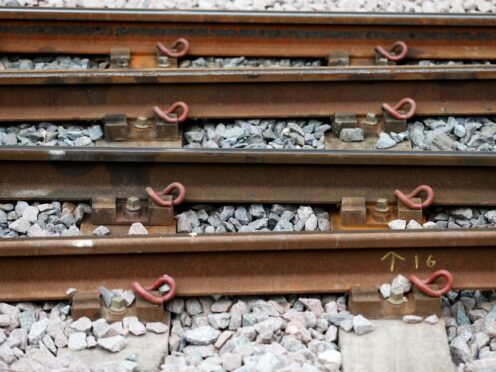
Long-awaited plans to overhaul Britain’s railways have been published by the Government in a draft Bill.
Proposals include the creation of a new public sector body named Great British Railways (GBR) to hold responsibility for rail infrastructure and awarding contracts to operate trains.
Attempts to improve punctuality and simplify ticketing are among other measures set out by ministers in the draft Rail Reform Bill.
It is unlikely the legislation will make it on to the statute books before the next general election.
Transport Secretary Mark Harper said: “It’s been nearly 200 years since the birth of the British railways and with travel patterns having significantly changed over the last few years, it is now more important than ever that they keep up with the changing times.
“This draft Bill demonstrates our commitment to reforming the railways.
“Working with industry, we will move towards a more modern and financially secure rail network that delivers for passengers for the next 200 years, too.”
The formation of GBR was announced by then-transport secretary Grant Shapps in a White Paper named the Williams-Shapps Plan for Rail in May 2021.
This was based on the recommendations of a review carried out by former British Airways chief executive Keith Williams, which was established in September 2018.
Senior political figures and industry experts have criticised the amount of time it is taking the create GBR.
Labour’s shadow transport secretary Louise Haigh said: “It is fitting that the Conservative’s flagship rail reform plan has arrived so late, it has no prospect of ever becoming law.
“Years after they promised change, they’ve finally admitted they can’t and won’t fix our broken railways.”
Former Conservative transport secretary Lord McLoughlin told an event organised by the Railway Industry Association trade body on Monday it is “incredibly disappointing” that the Bill would be in draft form.
The DfT said “many reforms and tangible improvements for passengers are already being delivered”, such as the rolling out of pay as you go ticketing to more stations in the South East and trials of the technology in the West Midlands and Greater Manchester.
Network Rail chief executive Andrew Haines, who is leading the Great British Railways Transition Team, said: “Passengers, freight customers and communities are crying out for a simpler, better railway and the publication of the draft Bill is an important step on that journey.
“Bringing track and train together under a guiding mind is by far the best way to improve the service the railway offers, unlock the economic potential of a growing network and reduce the burden on the taxpayer.”
Jacqueline Starr, chief executive of industry body the Rail Delivery Group, said: “It is good news that the draft Rail Reform Bill has been published.
“This is another important step in setting up GBR and moving forward with the agreed reforms to improve the railway for the customer.
“The challenges facing the rail industry are well known, but rail is a vital service and should have a bright future if we work together.”
Andy Bagnall, chief executive of Rail Partners, which represents private sector rail organisations, said: “While not a substitute for legislation, the draft Bill kicks off an important process to identify areas of consensus and disagreement between the political parties ahead of a general election.
“In the meantime, we must get on and deliver for customers, so non-legislative measures that support the freight growth target and improve the customer experience, such as more pay as you go, are very welcome.”
Silviya Barrett from charity Campaign for Better Transport said publication of the draft Bill is “a much-needed step towards long-awaited rail reform”.
She went on: “Now we need to see it move swiftly through to the next stage.
“In the meantime, we urge the Government to move forward with changes that do not require legislation, including meaningful reforms to ticketing that deliver actual benefits and better value for passengers.”

Enjoy the convenience of having The Sunday Post delivered as a digital ePaper straight to your smartphone, tablet or computer.
Subscribe for only £5.49 a month and enjoy all the benefits of the printed paper as a digital replica.
Subscribe